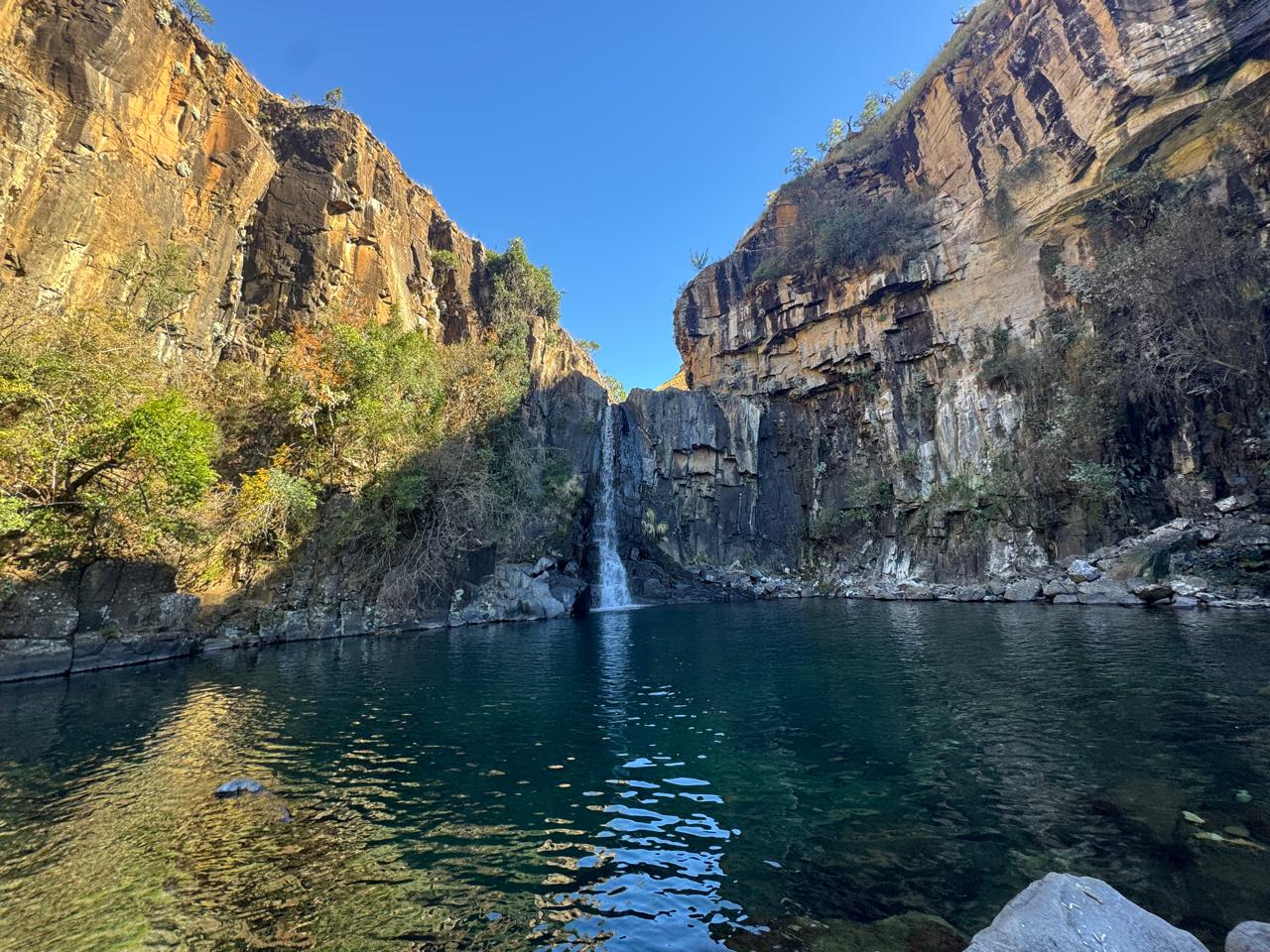How to choose a rain jacket



If you enjoy spending time outdoors – and I’m going to assume that you do given that you’ve clicked through to this article – then you’ll know that wet weather can really put a damper on things.
But, keeping dry in the wet isn’t just about comfort. Your raincoat is also a vital piece of safety equipment. Don’t believe me? Consider the three women who died hiking in the Swartberg in September 2009 (they used garbage bags as ponchos). Or the 21 trail runners who succumbed to hypothermia on a race in China last year because they only had windproof – not waterproof - jackets. Mark says: don’t become a statistic. Pack a proper raincoat!
As with all outdoor gear, one size doesn’t fit all (and I’m not talking about actual size, though obviously this is important too). Selecting the right jacket requires some homework. Clearly you don’t want to use a trail running raincoat for an ice climbing trip to the Drakensberg. Or vice versa.
When deciding what jacket to buy you will have to consider what sport you do, where you will be using it and what your specific needs are. And I’ve got bad news (or good news if you enjoy accumulating lots of sexy outdoor gear like me): if you do a variety of sports then you will likely have to buy more than one jacket. Personally I have three raincoats in my cupboard – one for big mountains and alpine climbing, one for local missions and a lightweight one for train running. In this article I’ll provide you with the tools to select the right jacket(s!) for your needs, along with some handy tips on how to care for your raincoat.
THE ANATOMY OF A RAIN JACKET
What differentiates a waterproof jacket from, say, a windbreaker or cheapie “raincoat” from Bob’s Sports Shoppe? Obviously the former is, well, waterproof i.e. it provides 100% protection from rain (sleet, hail, snow, spilled Cup-A-Soup, etc). But what is it about the construction of a raincoat that gives it this property? Let’s take a closer look.
Face fabric
This is the material that the jacket is made from. It gives the garment its shape, and as the outer layer also provides durability and serves as the first line of defence against the elements. That said, no fabric is completely waterproof, hence the need for a….
Waterproof breathable membrane
The only way to make a garment 100% waterproof is to bond a synthetic membrane to the inside of the face fabric. These are made from special polymers that are lightweight, thin and stretchy (similar to latex gloves), and form a complete barrier against liquids. The downside is that they’re very delicate, hence the face fabric on the outside to provide protection.
Now here’s the clever bit. Where your grandmother’s old mackintosh was lined with an impermeable layer of rubber, which trapped sweat on the inside as well as keeping the rain out, modern polymer membranes are “breathable” ie they allow body heat and perspiration to escape while simultaneously blocking liquid from entering from the outside. This is essential for any outdoor pursuits where you’re likely to work up a sweat, whether it’s trail running on Table Mountain or trying to rescue your buddy from a crevasse on Mount Everest. Familiar waterproof breathable brands include Gore-Tex, eVent and Dermizax.
Taped seams
The more perceptive of you may be wondering: what about the seams? Surely the needle stitching punctures holes right through the membrane? And indeed it does, which is why only jackets which have tape bonded over the seams are considered fully waterproof. Be warned: there are cheaper “raincoats” out there that aren’t seam sealed. Avoid!

Inner lining
Some rain jackets have a third layer on the inside. This provides additional protection for the membrane (which is safely sandwiched between the inner and outer fabrics), as well preventing the membrane from coming into direct contact with your skin (which can reduce the breathability if you’re really sweating hard). This three-layer construction is highly effective, even in extreme conditions. The downside is such jackets tend to be bulkier, heavier and more expensive, which is why many people rather opt for a two-layer jacket.
DWR coating
Finally, most manufacturers apply a durable water repellent (DWR) coating to the outside of the face fabric. As the name suggests it is not fully waterproof, but it adds an additional layer of protection from the elements, and also prevents the face fabric from becoming waterlogged and heavy.
Special features
By this stage you should have an idea of whether you want to go for a two- or three-layer jacket. In general the latter is the preferred choice for trekking and mountaineering, especially if extreme weather conditions are expected – think the Drakensberg in winter, climbing Mont Blanc or trekking in Patagonia. Some hikers also prefer to use a three-layer jacket, but for local trails I’m generally happy using a two-layer one, especially on some of the more softcore routes like the Otter or Whale Trail. And for highly aerobic activities like trail running and mountain biking you obviously want the lightest two-layer jacket you can find.
But there’s more to a raincoat than its thickness and weight. What really differentiates models are the special features, those design aspects that have a particular activity or environment in mind. Let’s take a closer look.
Adjustable hood
This is pretty much essential. Whether you’re doing the SkyRun or climbing Kilimanjaro, you want your hood to stay securely on your head regardless of how strong the wind is (or how fast you’re running!). Different manufacturers use different designs eg Velcro tabs or an elastic drawstring. Which one you go for is a personal choice. For climbers and alpinists, make sure you buy a jacket that is helmet compatible.
Pockets
Most people will want a couple of pockets to stash things like energy bars or bear repellent. If you’re a hiker or climber, consider a jacket that has pockets higher up on the chest – this way you can still access them when you’re wearing a hip belt or harness. For runners and mountain bikers, a pocket at the back above your bum can be super useful for stowing a car key or cellphone.
Body-hugging cut
A loose-fitting jacket might be fine for going to the rugby, but if you’re into mountain sports then you’ll want one that fits more snuggly. This is particularly important for activities that require freedom of movement, for example running or ice climbing. Some of the top-end jackets have additional features for maximum mobility, for example stretch fabric and articulated (not straight) arms.
Reinforced shoulders
If you’re planning to carry a heavy backpack, then consider getting a jacket that has thicker fabric on high-wear areas, especially the shoulders. Likewise, rock climbers and anyone else who expects to regularly scrape their jacket over rough surfaces should go for one that has hard-wearing face fabric.
Underarm zips
Fact: even the best waterproof breathable fabrics still struggle to keep you cool and dry if you’re sweating heavily. Which is why many raincoats come with additional zips that can be opened to promote air flow. And the position of the zips – under the arms – means that rain won’t get in unless you’re in a hurricane or doing a headstand.
LOOKING AFTER YOU RAIN JACKET
Be gentle
Not as in put it behind glass and never touch it. Raincoats are built to be used, obviously, but where possible try to avoid hammering them – think bundu-bashing through a wag-a-bietjie bush or leaving it on the ground when you’re stomping around in crampons – especially if you’ve got a two-ply jacket.

Store it right
Talking about crampons, it’s obvious that you shouldn’t pack your jacket next to sharp, pointy things in your backpack or duffel bag. Likewise, don’t throw it loose in the boot of your car next to that leaking bottle of battery acid. And back at home you should treat your jacket like medication or potatoes ie store it in a cool dark place, preferably hanging in the cupboard rather than scrunched at the bottom of your rucksack.
Keep it clean
Some people think you should never wash a raincoat. Those people are wrong. Dried sweat, body oils and that spilled Cup-A-Soup all clog up the pores in the membrane, compromising the jacket’s performance. What you shouldn’t do is wash a raincoat with conventional detergent. This will also block up the pores, and may strip the DWR coating too. Instead use a specialist product like Nikwax Tech Wash. And if the DWR has worn out (easy to test in the shower or using a garden hose – see our latest video on instagram), then Nikwax also offer a fantastic product called TX.Direct that replenishes your jacket’s water repellency.

When deciding what jacket to buy you will have to consider what sport you do, where you will be using it and what your specific needs are. And I’ve got bad news (or good news if you enjoy accumulating lots of sexy outdoor gear like me): if you do a variety of sports then you will likely have to buy more than one jacket.


















